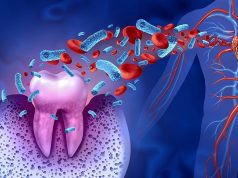Method using diffusion tensor imaging may predict dementia in patients with cerebral small vessel disease
THURSDAY, Sept. 12, 2019 (HealthDay News) — Diffusion tensor image segmentation technique (DSEG), which characterizes microstructural damage across the cerebellum, identifies damage in cerebral small vessel disease (SVD) and can predict dementia, according to a study published online Sept. 12 in Stroke.
Owen A. Williams, Ph.D., from St. George’s University of London, and colleagues examined the extent to which DSEG predicts cognitive decline and conversion to dementia among 99 patients with SVD aged 43 to 89 years who underwent annual magnetic resonance imaging for three years and cognitive assessment for five years. DSEG-θ was used as a measure of SVD severity. DSEG measures and vascular risk factors related to increased dementia risk were identified.
The researchers found that DSEG-θ correlated significantly with decline in executive function and global cognition. Overall, 18.2 percent of patients converted to dementia. Dementia was predicted by baseline DSEG-θ with a balanced classification rate of 75.95 percent and area under the receiver operating characteristic curve of 0.839. Baseline DSEG-θ, change in DSEG-θ, age, sex, and premorbid intelligence quotient provided the best classification model (balanced classification rate, 79.65 percent; area under the receiver operating characteristic curve, 0.903).
“These findings suggest that DSEG may be used as a clinical tool to monitor SVD progression in patients and predict risk of developing dementia,” the authors write.
Copyright © 2019 HealthDay. All rights reserved.








